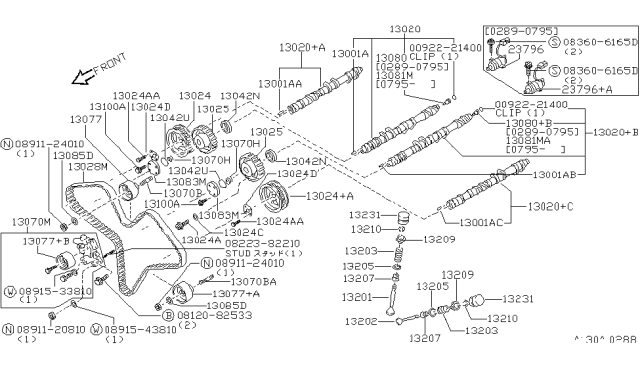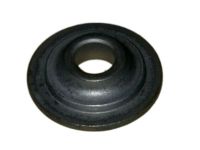Broken valve springs and defective valve stem seals can be replaced without removing the cylinder heads, typically requiring two special tools and a compressed air source. Begin by removing the intake plenum and valve covers, followed by the timing chain, camshafts, and lifters from both cylinder heads. Remove the spark plugs and turn the crankshaft until the piston in the affected cylinder is at Top Dead Center on the compression stroke. If replacing all valve stem seals, start with cylinder number one and work through the firing order. Thread a long adapter into the spark plug hole and connect an air hose from a compressed air source. Due to the length of the spark plug tubes, a long spark plug adapter with a hose attached is necessary. Apply compressed air to the cylinder and stuff shop rags into the cylinder head holes around the valves to prevent parts and tools from falling into the engine. Use a valve spring compressor to compress the spring, releasing the valve stem keepers, which can be lifted out with a magnet or needle-nose pliers. The valves should be held in place by air pressure; if they cannot hold air, the cylinder head should be removed for a valve job. Remove the spring retainer, valve spring, and valve stem seal, then wrap a rubber band or tape around the top of the valve stem to prevent it from falling into the combustion chamber before releasing the air pressure. Inspect the valve stem for damage, ensuring it does not bind in the guide; if it does, the cylinder head will need to be removed for repair. Reapply air pressure to retain the valve in the closed position, lubricate the valve stems with engine oil, and install new valve stem seals using a special tool or a deep socket and hammer. Install the valve spring with the more closely-wound coils and paint mark toward the cylinder head, followed by the valve spring retainer. Compress the valve springs and position the keepers in the groove, applying a small dab of grease to hold them in place. Remove the pressure from the spring tool and ensure the keepers are seated, then disconnect the air hose and remove the adapter from the spark plug hole. Reinstall the camshafts and lifters, then the timing chain, valve covers, and spark plugs, along with ignition coils and the upper and lower intake plenum. Finally, start the engine and check for oil leaks and unusual sounds from the valve cover area.
Posted by NissanPartsDeal Specialist 










